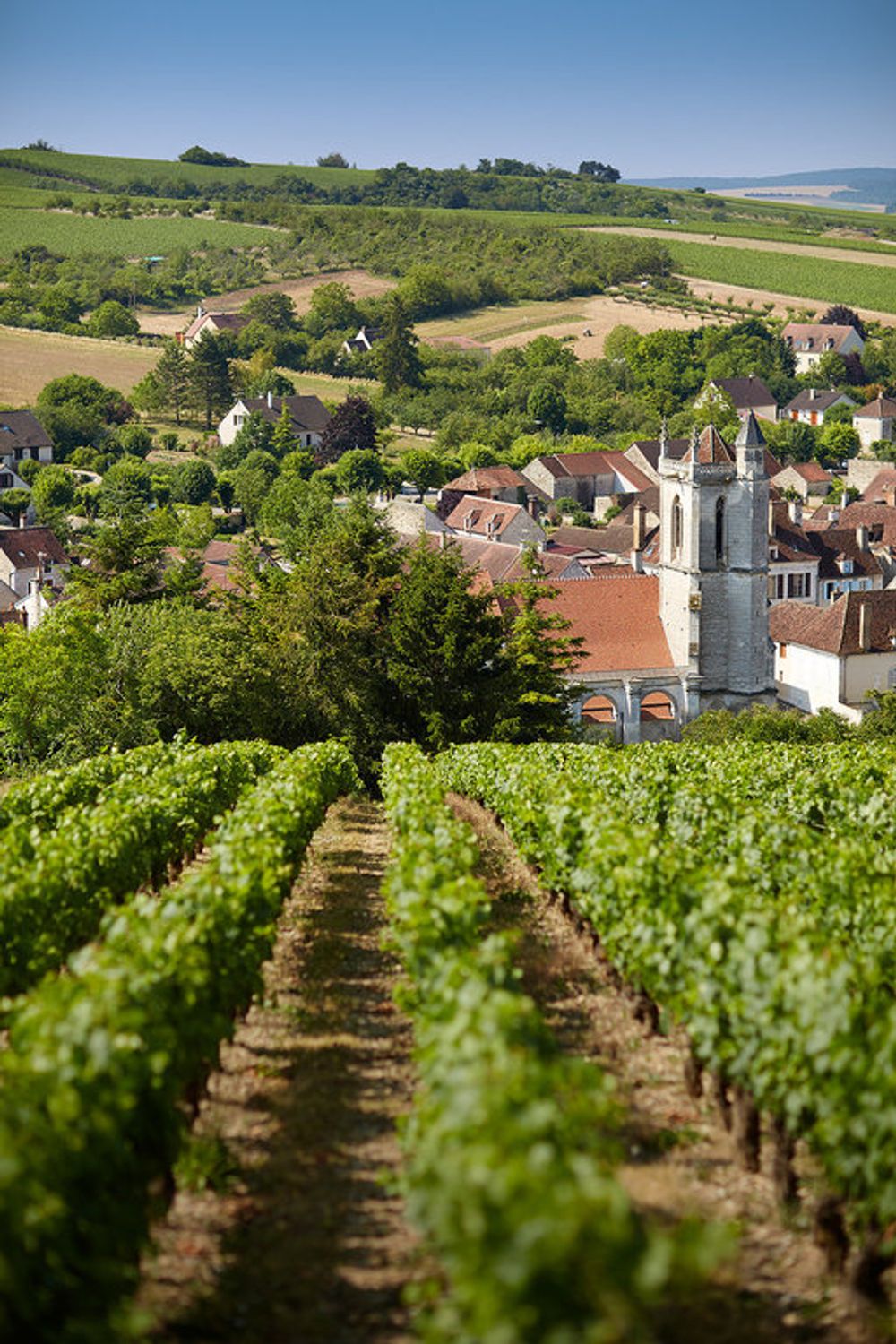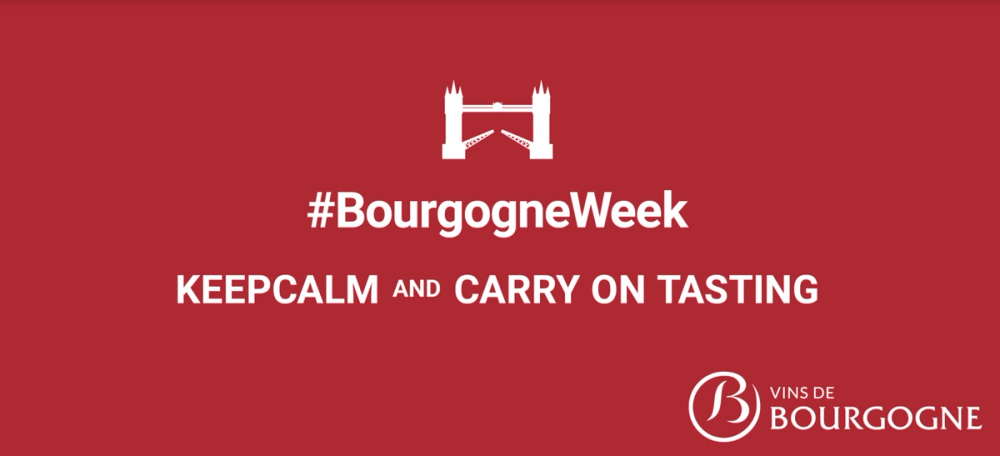Rebecca Fraser at Louis Latour Agencies and Paul Espitalié at Domaine Simonnet-Febvre are united in their excitement for the 2020 Bourgogne vintage and what it offers both trade and private customers.

Irancy
Although the 2020 vintage has been praised by critics and the trade, volumes are smaller than average which puts pressure on supplies. One of the outcomes is that lesser-known Bourgogne appellations can fill the gaps once taken by other wines, as well as providing different and esoteric wines to add interest and offer something new to customers. Such is the case with Irancy, an appellation which is home to the most Northern Pinot Noirs in Bourgogne and which is benefitting from warmer and riper vintages.
Louis Latour – Rebecca Fraser, head of marketing

Rebecca Fraser
How important is Bourgogne to your overall business?
Wines from Bourgogne play a key role in our UK business. As the UK subsidiary of Maison Louis Latour we have a significant range of Burgundian wines from Louis Latour, Simonnet-Febvre and Henry Fessy. We work with well-known and lesser-known appellations and both still and sparkling wines.
Has that significance grown in recent years and if so how and why?
Over the last couple of years, we’ve seen a significant increase in sales with both commercial wines such as those from Mâcon and Bourgogne AOCs and for fine wines. We have also introduced new wines from lesser-known appellations to our UK range including Pernand-Vergelesses and Fixin from Louis Latour and wines from Coteaux de l’Auxois from Simonnet-Febvre.
Why do you think Bourgogne still offers such a draw to UK buyers and consumers?
Bourgogne can still offer a lot to UK wine drinkers. People can find reliable names they are familiar with but they can also seek out new experiences from the wealth of lesser known appellations available. I think that Simonnet-Febvre’s Irancy is a prime example of this because it has a distinct and very appealing style that allows drinkers to discover experiences beyond the Bourgogne mainstream.
Can you be more specific about why you want to have wines from that particular appellation?
We like working with Simonnet-Febvre’s Irancy because it is a delicious wine that gives people a taste of Bourgogne at a relatively affordable price. It also has a great story coming from the vineyards of Irancy which sits in a natural amphitheatre, in a village known for its cherry trees. The addition of the almost extinct César grape variety also makes a good talking point and adds a different dimension to the wine.
What do you see as the key characteristics of that appellation?
Simonnet-Febvre’s Irancy is typically fragrant and rich combining darker side of Pinot Noir with wild herbal notes and a bit of additional structure from the César.
What do you think your restaurant and merchant customers most want from Bourgogne and has that changed in recent years?
We find that the restaurants and independent merchants we work with continue to look for well-known names that customers are familiar and confident with. However, in the last few years as Bourgogne prices have risen, we’ve also seen an increasing demand for lesser-known appellations that offer quality and value for money. These wines work particularly well in the environment where wines are hand-sold to customers or where customers are looking to discover new and different wines.
What opportunities do you see for Bourgogne’s lesser-known appellations?
We see a lot of potential for Bourgogne’s lesser-known appellations and this can be for a number of reasons. With low yielding vintages for the last few years and pressure on supplies, we are seeing some of our customers explore different appellations to fill gaps that were once filled by other wines. We also see demand from customers who are looking for different and esoteric wines to add interest and offer something new to their customers.
Any particular hidden gems you think we should be aware of and why?
From Louis Latour a perennial staff favourite is the Pernand-Vergelesses Premier Cru, En Caradeux, a really great white from Latour’s domaine vineyards that, compared to other Village Premier Cru wines from the Côte-d’Or, offers fantastic value for money.
Maison Simonnet-Febvre – Paul Espitalié, general manager and winemaker

Paul Espitalié
Can you tell us some history and key points about your winery?
Established in 1840 in Chablis, Simonnet-Febvre initially made its name for sparkling wines.
Part of the Louis Latour stable since 2003, we have developed a comprehensive range of wines from our vineyards in Chablis. With a firm focus on Chablis Grand Cru, Chablis Premier Cru and Chablis Village AOCs, we also produce a quality range of wines from the Grand Auxerrois appellations.
What are the main styles of wine you produce?
We mainly produce Chablis, leaning towards a fresh and mineral style, Crémant de Bourgogne and red wines like Irancy and Bourgogne Epineuil.
You produce Irancy wines. What do you think makes this appellation so different and unique?
The Irancy vineyard is the most northerly of the Bourgogne Pinot Noirs. This lends the wines great freshness and intense aromas characterised by red fruits (cherry) and spice.
Has the way you make this wine changed in the last 10-15 years, and if so, how?
The main change in recent years has been greater ripeness. This allows for greater extraction, creating more intensely-coloured wines and ripe tannins.
How do you see the 2020 vintage in terms of quality and style?
2020 was an exceptional year. The harvest was relatively modest but the wines are highly concentrated, with intense ripe fruit notes of blackcurrant and blackberry.
How was the 2021 vintage for you in terms of volume – were you impacted by the early April frost, and will you have enough supply for your export customers?
We were hit by the spring frosts, and as a result the harvest was very small – less than 20hl per hectare. After a harvest deficit in 2020, stocks remain quite low, but we have reserves to fall back on as we are now starting to market the 2019 vintage.
What steps are you taking to be more sustainable and tackle climate change?
For Irancy wines, climate change has allowed us to make more highly-coloured wines than in the past. We keep a close eye on harvesting dates, which have to be earlier than in the past. Growing practices are evolving to take account of global warming but to date there have been no structural changes in the vineyard. In the long term, we will move to later-ripening Pinot Noir varieties.
You can catch up with all that happened as part of #BourgogneWeek 2022 on social media at @BourgogneWines on Twitter and @vinsdebourgogne on Instagram as well as the official Bourgogne Wines website here.
And catch up on these other Bourgogne Week features:
Guy Seddon: freshness is key to brilliance of Burgundy 2020
Bourgogne Week Q&A with Flint Wines and Bruno Lorenzon
Clerc: Burgundy 2020 defines itself as a stunning white vintage
Bourgogne Week Q&A: Berry Bros & Domaine Follin-Arbelet
Bourgogne Week: Charles Taylor Wines & Florent Rouve

































